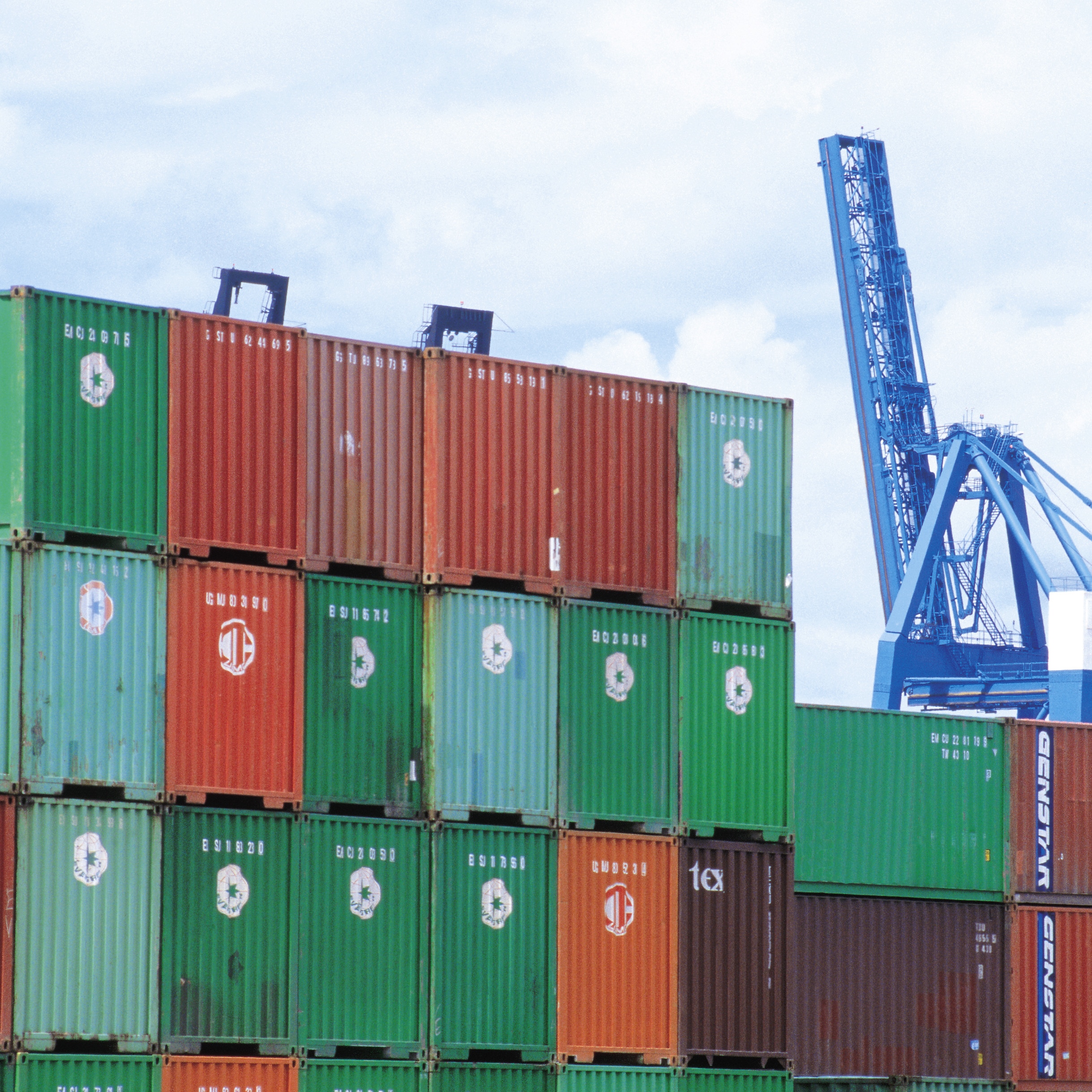
Global trade has had a tough year. The COVID-19 pandemic put an end to a recovery that began in February following a January dive after word of the coronavirus outbreak in Wuhan, China. By mid-June, container ship traffic had dropped by 8.5% year over year.
The early August data, compiled by the United Nations Conference on Trade and Development (UNCTAD), showed that the gap had closed to a year-over-year deficit of just 3%. UNCTAD’s data is based on weekly container ship port calls. Weekly port calls to North American ports were down more than 16% year over year in August. Port calls in China/Hong Kong have risen by more than 4% year over year.
Because most of the manufactured goods that people produce and consume are shipped in containers, shipping traffic is a reasonable proxy for global trade. For an even more granular look at shipping data, we can take a look at orders and leases for new containers.
A few companies in China manufacture virtually all shipping containers, and the world’s shipping firms buy only a small number of those containers. Most are bought by companies that lease the containers to the cargo shipping lines.
Michael Webber, founder of Webber Research & Advisory, told cargo industry publication FreightWaves that following the share prices of container leasing companies “offer a better real-time gauge of what’s actually happening” in global trade.
Three U.S. traded companies that lease shipping containers are Triton International Ltd. (NYSE: TRTN), Textainer Group Holdings Ltd. (NYSE: TGH) and CAI International Inc. (NYSE: CAI). All three recently made presentations at a virtual conference for institutional investors sponsored by investment firm Keefe, Bruyette & Woods (KBW). And all three agreed that demand is rising for containers.
The Chinese container makers have booked all their capacity through January 2021 and are now taking orders for delivery in February and March. KBW told FreightWaves that Triton expects “heightened activity” through the fourth quarter and potentially through mid-February (Chinese New Year). Textainer noted that customer demand “looks like it is going to continue into the first quarter.”
Part of the increase in demand is due to a shortage of supply. China recently implemented regulations limiting container manufacturers to one shift per day, “effectively capping production levels,” according to KBW.
Demand is highest for 40-foot containers that carry lighter goods like furniture and other home goods. Heavier goods like raw materials are shipped in 20-foot containers. Triton commented that its portfolio of 40-foot units is nearly 100% leased.
Even if COVID-19 makes a second run, the leasing companies already have leased the vast majority of their 40-foot units on multiple-year contracts at favorable rates.
Prices for a 20-foot container on a cost-equivalent unit (CEU) basis have risen from $1,800 to $2,200. A 40-foot container would cost $4,400 at the current CEU. And if demand continues strong, prices could rise again following Chinese New Year. The current rate for shipping a 40-foot container from China to California is nearly $4,000.
The current Baltic Dry Index indicating the daily spot rate for a cargo ship has risen from a 52-week low of 393 to around 1,426. That’s still well short of the index’s 52-week high of 2,116 set in July. Day rates for Capesize vessels (about 150,000 metric tons) jumped by more than $4,200 to $22,841 on Wednesday.
U.S. railroads last week posted a year-over-year gain of 6.5% in the number of containers they hauled, according to data compiled by the Association of American Railroads. For the year to date, nearly 9.5 million containers have been shipped by rail in the United States, down by nearly 250,000 units (6.5%) year over year. Intermodal (container) shipping has picked up in the past four weeks, however, cutting the cumulative year-over-year decline by 1.2 percentage points.
Among the container leasing firms, CAI stock is up nearly 18% for the past 12 months. The stock traded up about 2.7% in the noon hour Thursday, at $26.38 in a 52-week range of $10.13 to $29.57. The consensus price target on the stock is $22.00.
Textainer shares have added nearly 22% over the past 12 months and traded up about 6.5% Thursday at $13.88. The stock’s 52-week range is $5.50 to $15.13, and the consensus price target is $13.00.
Triton stocks traded up about 1.2% Thursday, at $39.18 in a 52-week range of $19.80 to $41.54. The price target on the stock is $46.00, and shares already have added nearly 34% over the past 12 months. Over the past three years, Triton is the only one of these stocks to show a gain, but it’s a solid 42.5%.
The Average American Is Losing Momentum On Their Savings Every Day (Sponsor)
If you’re like many Americans and keep your money ‘safe’ in a checking or savings account, think again. The average yield on a savings account is a paltry .4%1 today. Checking accounts are even worse.
But there is good news. To win qualified customers, some accounts are paying more than 7x the national average. That’s an incredible way to keep your money safe and earn more at the same time. Our top pick for high yield savings accounts includes other benefits as well. You can earn a $200 bonus and up to 7X the national average with qualifying deposits. Terms apply. Member, FDIC.
Click here to see how much more you could be earning on your savings today. It takes just a few minutes to open an account to make your money work for you.
Thank you for reading! Have some feedback for us?
Contact the 24/7 Wall St. editorial team.
 24/7 Wall St.
24/7 Wall St.
